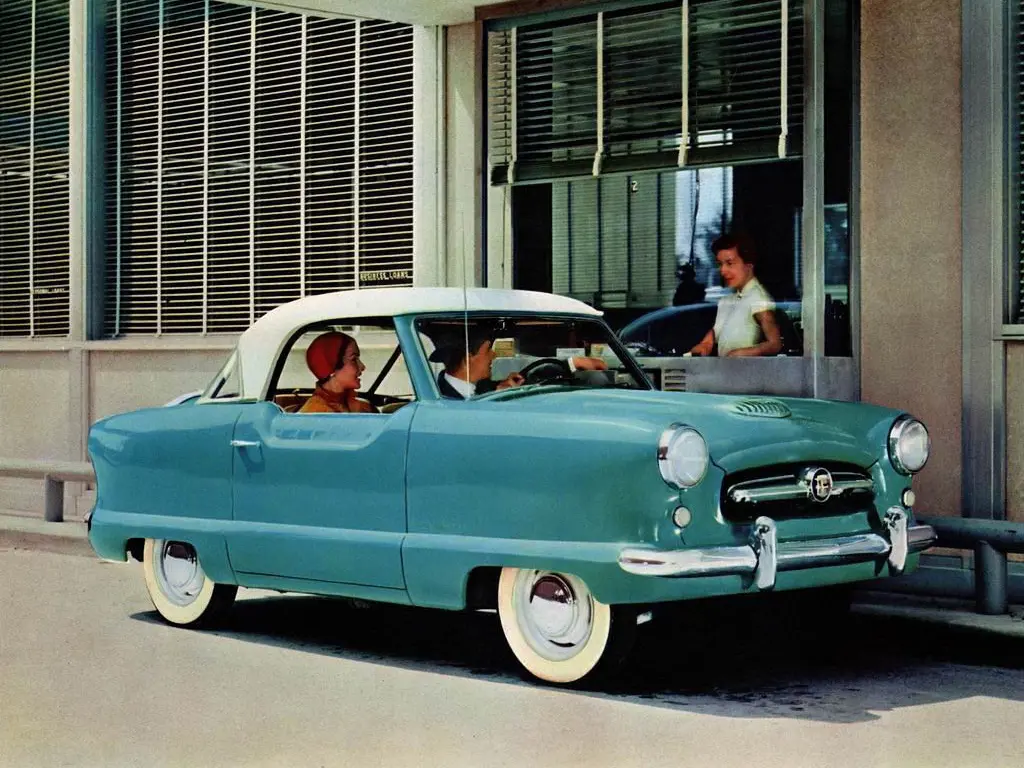THE ORIGINAL METRO FROM LONGBRIDGE – THE METROPOLITAN
03 May 2023
1953 saw the introduction of so many fine British cars, from the Jensen 541 and the MG Magnette ZA to the Standard Eight and the Ford Zephyr-Zodiac. And in October of that year, the first examples of an Anglo-American 'compact' – the remarkable Metropolitan.
The story commenced in 1950 when the Nash-Kelvinator Corporation of Wisconsin commissioned a public opinion poll which posed the question, "Does America Want the Economy Car?" The positive answers encouraged them to put 'Project NX1' into production, but they lacked suitable running gear and the facilities to manufacture them.
The solution was a European partner, and Nash approached Fiat and Standard-Triumph before signing an agreement with Austin due to their size and proven expertise with small cars. A further attraction for the US firm was a tooling bill of just $800,000 – low, even by the standards of the early 1950s.
Austin's subsidiary company Fisher & Ludlow made the distinctive bodywork which combined Pininfarina and Nash's tropes, while Longbridge built the 1.2-litre engines from the A40 Somerset and transmissions. Sales began on 19 March 1954, with the announcement, "It's here! Nash presents a completely new kind of car - the Metropolitan!" The hardtop cost $1,445, with a price of $1,469 for the convertible. Remarkably, Nash had only decided on the name as late as January 1954.
Your friendly local dealer could point out the map lamp and twin sun visors as standard. They would also be wise to emphasise how the boot was sealed against dust as it had no lid. The back rest for the vestigial rear seat doubled as the lockable access for the luggage compartment. But the Metropolitan looked entirely different to the Volkswagen Beetle, which was then enroute to becoming the archetypal European ‘economy car’. Instead, the new Nash resembled a scaled-down Ambassador. When specified with the optional white wall tyres, it looked every inch the perfect second vehicle for an affluent all-American household.
However, one possible sales drawback was the Metropolitan’s limited interior space. Nash attempted to forestall complaints, informing potential customers: “We know that the Metropolitan will not replace the family car because it is not designed as a substitute. We deliberately created maximum front seat comfort and spaciousness, performance and economy for two adults, with adequate room for three. A utility seat in the rear provides for children.”
In reality the 'rear seat' was best reserved for parcels, while the front bench was best suited to two very close friends. The front wheel arches presented a further problem, as the Metropolitan’s turning circle was only three feet less than a full-sized sedan. Nor did all motoring journals appreciate the Metropolitan’s handling. Road & Track grumbled it drove “exactly like a full-size stock American car. It has more than its share of wallow and roll on corners, and there is little seat-of-the-pants security when the rear end takes its time getting back in line.”

Fortunately, the great Tom McCahill was more impressed, writing in Mechanix Illustrated: “It is not a sports car by the weirdest torturing of the imagination, but it is a fleet, sporty little bucket which should prove just what the doctor ordered for a second car, to be used either for a trip to the movies or for a fast run to a penicillin festival.”
Later in 1954, Nash merged with the Hudson Motor Company to form the American Motors Corporation. AMC also sold the Metropolitan under the latter badge. The Series II of August that year had a slightly modified engine, and a year later, the Series III boasted the 1.5-litre B-series engine. There were also some handsome new duotone paint finishes; Caribbean Green, Sunburst Yellow or Coral Red combined with Snowberry White.
In 1957 Metropolitan became a marque in its own right, and British sales commenced that year – before than it was strictly for ‘export only’. Autocar thought it was “not a car with which one should take liberties in such matters as fast cornering”. The Series IV, with slightly more power, front quarter lights, and even a boot lid, debuted in January 1959.
That year saw the Metropolitan become the second best-selling imported car in the USA after the Beetle, but two developments foreshadowed its demise. Firstly, the late 1950s marked the rise of the Interstate Highway System and the Metropolitan was ill-suited to sustained motoring at speed. Secondly, the end of the decade marked a new generation of US 'compacts' – the Ford Falcon, the Chevrolet Corvair and the Plymouth Valiant.
Consequently, April 1961 marked the last of 94,896 models. UK sales had ended two months earlier but the Metropolitan continued to appear in AMC showrooms until 1962. A final hurrah was a black model with green leather upholstery and green carpeting specially built for HRH Princess Margaret. Unfortunately, four youths stole it for a joyride in February 1961, demonstrating how certain Teddy Boys lacked respect for the Royal Family and the Metropolitan. The car was later recovered – does it survive today?
Today, there is a thriving British club - metropolitanownersclub.co.uk. Not everyone approved of its charms; the art historian Brian Sewell called it “a preposterous aberration incorporating the worst of everything American” with “vile colours”. But it is a car that deserves celebrating as an example of Anglo-American cooperation producing a model ideal for its intended market, with sales of 83,442 units in the States.
As Motor Trend magazine stated, “If this car doesn't crack the American small car market, there is no such market!" Plus, the Metropolitan really does look as though it belongs in the sort of Technicolor Hollywood film where James Stewart would say, "Hi honey – I'm home!"
